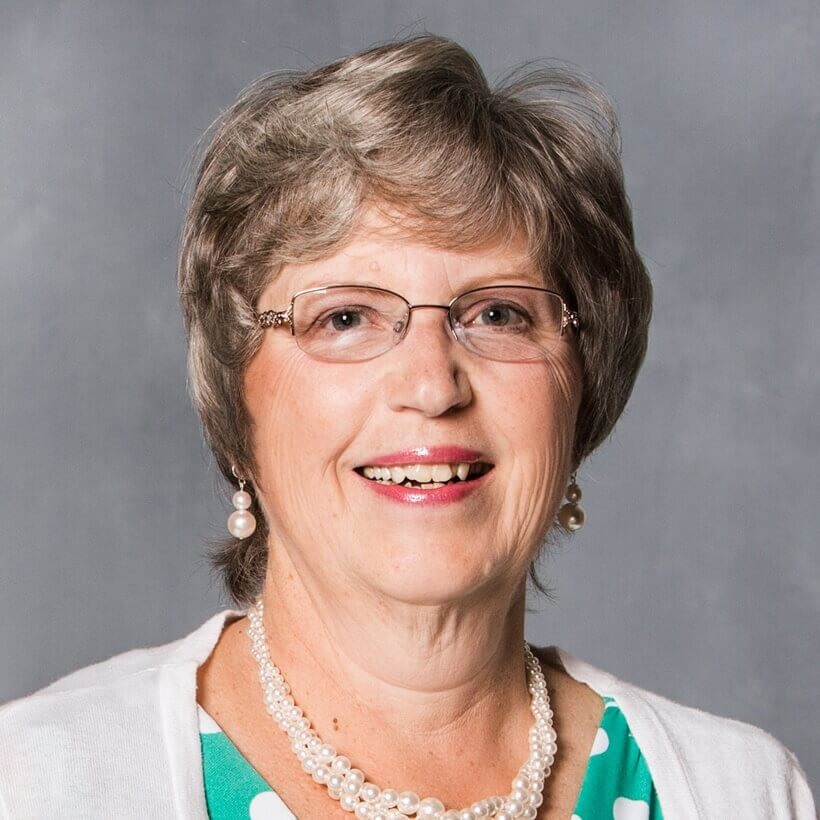

My post-surgery treatment consisted of radiation every day for seven weeks. I continued to work during this time, and the level of care at City of Hope enabled me to do so. I would work at my job as a school teacher and then go to City of Hope in the evenings for radiation treatment. I would also have dinner at City of Hope, which was a real comfort to me.
Disclaimer
I guess you could say I’m a poster child for having an annual mammogram. I had them every year, religiously. In December 2008, a radiation oncologist noticed some suspicious spots on my mammogram. The spots were small and deep within the tissue; there was no lump that could be felt by hand. My doctor told me that the cells, classified as ductal carcinoma, had probably been developing for several years. I was quite surprised by the diagnosis since my family had no history of cancer and I have always been healthy. My faith in God gave me a deep sense of peace, so I did not feel concerned. I just wanted to get things taken care of quickly.
The recommended treatment was surgery. I had an MRI at the same facility where I’d had the mammogram and scheduled the surgery. Then I got to talking with some friends. By coincidence, a friend of mine had undergone a similar surgical procedure at Cancer Treatment Centers of America® (CTCA)* just three days after my diagnosis. She had only glowing things to say.
I decided to call CTCA®. The facility in suburban Chicago is just three blocks from my home, but I had not considered calling the hospital before. The experience was positive from the start. The level of care and concern, along with the variety of extra services—such as nutrition guidance and naturopathic support—gave me comfort. These supportive approaches wouldn’t replace my medical care, but it was wonderful to have them available. I chose to schedule my treatment at CTCA.
Working through treatment
I was scheduled for a lumpectomy about three weeks after my diagnosis. The surgery went as planned, and there was no lymph node involvement. My surgeon also sent some of the tissue for diagnostic testing to determine whether I was likely to benefit from chemotherapy. The test results put me at the middle of the road, and after considering the matter heavily over a weekend, I decided not to have that additional treatment. I instead completed the recommended five years of maintenance treatment with Arimidex® by April 2014. Supportive care services have helped to reduce the side effects of the drug.
My post-surgery treatment consisted of radiation every day for seven weeks. I continued to work during this time, and the level of care at CTCA enabled me to do so. I would work at my job as a school teacher and then go to CTCA in the evenings for radiation treatment. I would also have dinner at CTCA, which was a real comfort to me.
From the start of my treatment, the level of care was unlike anything I’d ever experienced before. My radiologist spent an hour describing a specialized procedure called gating that he wanted to do with me. With this approach, my breathing was measured and used to make a calculation about the timing of radiation. The radiation beam was coordinated with my breathing as a way to reduce the risk of organ damage. That was an extra measure that my doctor did not have to take but wanted to because he thought it might help me.
When I experienced some burning from the radiation, my care team provided creams and coconut oil to help treat my skin, and they kept a watchful eye to make sure the burns did not get too painful.
I never felt like my doctors had authority over me. Instead, they made me feel important, that my opinion counted in my care. Every question I had was taken seriously. The care was extensive, down to my doctor giving me his cellphone number, and the warmth extended to me by the care team was, for me, part of the treatment.
Having my husband as my caregiver helped me stay strong during my treatment. We had been married for 36 years by then, and he took over everything at home—the shopping, the housework—and also provided me with emotional and spiritual support. I was heartened to see how CTCA took care of him. He could get educated on how to take care of me, and himself, and there were always people available to talk to if he needed.
Back to triathlons and living life to the fullest
I’ve always enjoyed exercise, and had completed two triathlons before I was diagnosed with cancer. Since my treatment, I completed another race in 2012. In 2011, I had the joy of going with my older daughter and her husband to pick up their newly adopted baby in Florida, and to pick up his adopted half-sister in 2015. I am so thankful to have the good health to care for them a couple days a week. I also traveled to South Africa with my church, went on a Disney cruise with my younger daughter and her two girls, and took a trip to New York after my five-year Celebrate Life® event with CTCA.
My grandchildren and my family as a whole have always kept me strong, and especially so during cancer treatment. Thinking about all that there is to do, all I want to do, and knowing my faith helped get me through, I’m thankful to feel as healthy as I did before treatment.
* Cancer Treatment Centers of America® (CTCA) is now City of Hope®, working together to expand patient access to personalized, comprehensive cancer care. Because this patient testimonial was written and published before CTCA® and City of Hope joined forces, mentions of legacy CTCA locations have not been updated in the interest of maintaining the patient’s original voice and story details.
